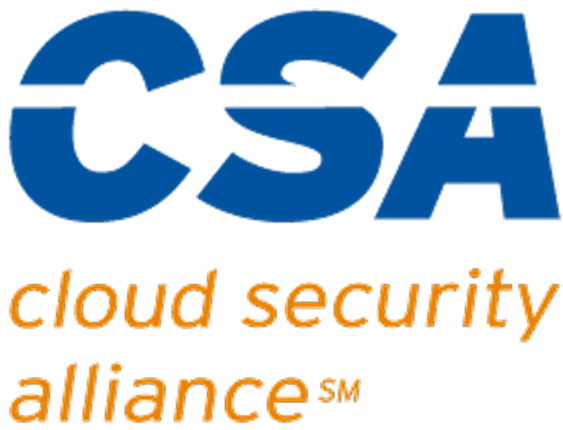Introduction
In the business world, automation can be essential to stay competitive. Automation is the use of technology to control the sequence of tasks performed to achieve a desired outcome. In other words, it’s a way to make things happen automatically. By automating routine tasks, you can increase productivity and reduce the potential for error.
There are several different ways to automate your business. You can automate your accounting and bookkeeping, marketing and advertising, customer service and support, and many other aspects of your operation. The best way to determine which areas of your business could benefit from automation is to look at what you do regularly and ask yourself if there is a straightforward way to automate that process. As you look at your day-to-day operations, think about whether it would be possible to automate each process you are currently doing manually. For example, if you work in accounting and bookkeeping, could you automate the process of inputting invoices into your accounting software?
What are the benefits of business automation?
In today’s fast-paced and ever-changing business world, it is more important than ever to utilize tools that can help you automate your processes and save time. Business automation technologies can help businesses improve efficiency, save money, and reach new customers. However, many companies are still hesitant to embrace automation, fearing that it will be too difficult to use or that they will not be able to achieve the same results as with traditional methods. Businesses must be willing to take risks and experiment with new technologies to stay competitive. By doing so, they may find that these technologies can help them achieve their goals and grow their business.
Business automation can help improve your bottom line, improving efficiency and responsiveness by reducing the need for employees to manually perform tasks and freeing up time for use on more important issues. Automation also frees up staff members’ creativity by allowing them to focus their energies on strategies and new ideas or solutions instead of repetitive tasks. There are many benefits of business automation, and here are just a few:
- Save time and money. Automated systems can help you do things more quickly and efficiently, and they can also help you reduce your costs by automating tasks that would otherwise have to be done manually.
- Improve customer service. Automated systems can handle many routine customer inquiries, making your customers happier.
- Manage business more effectively. Automated systems can track essential data and provide reports to help you make better decisions about your business.
- Improve your product or service offerings. By automating specific tasks, you may be able to create new products or services that would not be possible without automation.
What are some common types of business automation?
There are a number of different types of business automation that can be used, each with its own set of benefits. Common examples:
- Process automation. This involves using software to automate tasks commonly done by employees, such as data entry or customer service. Automating these tasks can speed up the workflow and reduce the need for manual input, and can save time and money.
- Workflow automation. This involves using technology that can automate the process of creating and updating documents, such as emails, websites, or reports. Workflow automation can also be used to automate complex processes, such as billing or inventory management.
- Manufacturing automation. This involves the use of machines or robots to manufacture products. Automating this process can improve accuracy and speed up production times, potentially increasing business profits. This type of automation can also significantly reduce the need for human capital, which can save money and help employers cut costs.
The use of automation is still in its infancy, but it has been steadily growing in popularity over the last few years. While some challenges come with implementing business automation, most businesses find that the benefits far outweigh the risks.
Is business automation right for you?
In the past, business automation was only for large, well-funded companies. However, business automation has become more affordable and accessible to small businesses over the past few years. Automation can even help your business expand into new markets. Many small businesses are unsure if business automation is right for them. If any or all of your business processes are currently being completed manually or require handling, you may be overlooking opportunities to improve efficiency and grow your business.
Before you decide to automate some or all of your business, there are a few things you need to consider. First, you need to determine what tasks can be automated and what things should continue to be handled by humans. You also need to ensure that you have the resources necessary to automate your business, as investments of time and money will be required to convert to automation. Finally, you need to ensure that the automation software and tools are compatible with your current IT ecosystem to avoid creating data “silos” (information isolated in systems that don’t communicate with each other).
How do you get started with business automation?
If you’ve read this far, you’re probably interested in pursuing business automation. Congratulations – it’s one of the more valuable things you can do for your business.
But where do you start? Many different types of business automation tools are available, each with its own strengths and weaknesses. To determine if business automation is right for your business, you must first assess your needs and then choose the right tool for the job. Here are a few tips:
- Start small. Don’t try to automate everything at once. Start with one relatively easy process and take time to see how the implementation fares before moving on.
- Evaluate your needs. What tasks can be most easily automated to save you time and money? Which automation projects will yield the most benefit?
- Choose the right tool for the job. There are various automation tools available, and different types of processes require different tools, so choose the one that best suits your needs and is optimized for the particular task at hand.
- Don’t be afraid to ask for help. You’ll find that others are happy to share their automation know-how and resources, so check online forums and Q&A sites for assistance. Your IT service provider can also be very helpful with implementing business automation tools.
What are some common challenges with business automation?
Business automation confers many benefits, but it’s not without challenges. One of the most common issues with business automation is inconsistency. With so many different tasks and processes being automated, it can be challenging to ensure that they are all executed successfully and completely each time. This can lead to inconsistency in the final product or service, which will frustrate everyone. While the idea of automation incorporates the notion of “hands-off,” quality assurance checks are necessary to maintain consistency.
Another common challenge with business automation is training. Automated tasks often require new employees to learn new software, systems, and procedures, which can take some time and may require overlapping use of old and new methods. If this training is not provided adequately, or if employees do not have the necessary skillset to use the automation tools, the result may be errors and slowdowns in productivity.
A third challenge is an overreliance on automation. When tasks are automated, it can be tempting for employees to stop paying attention and rely on machines to do everything for them. Automation is a timesaver, but it should not replace employee knowledge about the work being done. Staff may be called upon to intervene with automated processes if the system breaks down or something requires special handling. Employees must understand all steps of the automatic process; otherwise, it’s a mysterious “black box.”
Conclusion
Business automation can take many forms, from simple spreadsheet macros that help managers keep track of sales data to more sophisticated applications that can automate entire business processes. Automation can boost productivity, reduce errors, and make it possible for businesses to shift resources toward higher-value activities.
Automated systems can be programmed to do tasks that would typically require human labor, such as filling orders or answering customer service inquiries. This can lead to increased efficiency and reduced costs since you’ll need fewer employees to complete the same work. Additionally, automated systems are typically more accurate than humans, reducing the chances of errors or mistakes.
However, automation also has its downsides. Automated systems can be expensive to set up and maintain, and if you can afford to hire or train an employee to do the same work, it might not be worth the expense. Secondly, automation requires a level of trust from your customers and staff that can make them reluctant to use automated systems.
Automating your business can have many benefits, from reducing labor costs to improving efficiency. However, as with any decision, there are pros and cons to consider when deciding if automation is the right choice for your business.




